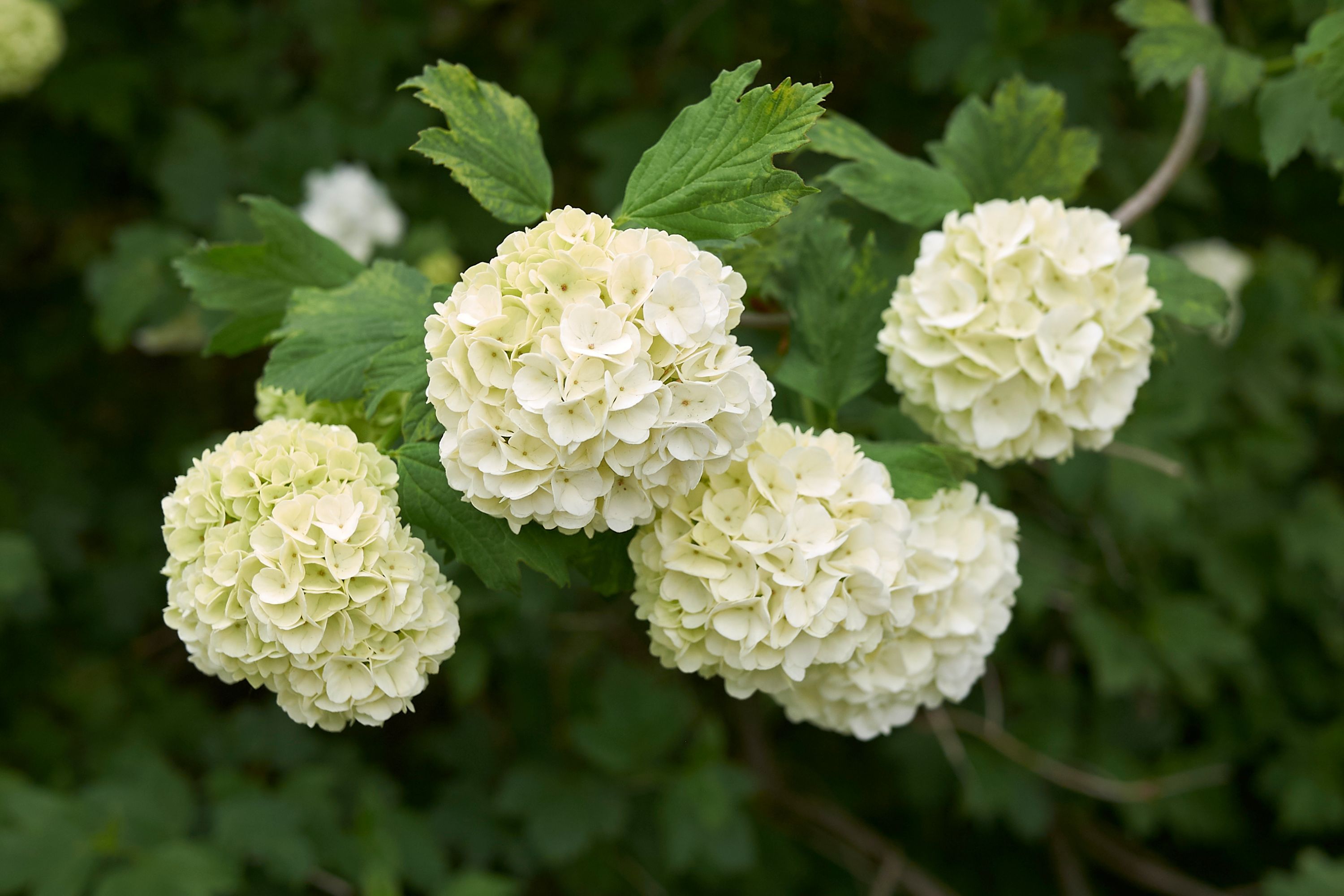Guelder-rose
(Viburnum opulus)

Description
Viburnum opulus, commonly known as the Guelder Rose or European Cranberrybush, is a deciduous shrub native to Europe, northern Africa, and Asia. This plant is famous for its showy clusters of white flowers in spring and its bright red berries in fall, which attract birds and wildlife. In this article, we will delve into the many aspects of Viburnum opulus, including its physical characteristics, cultivation requirements, and uses in landscaping and medicine. Physical Characteristics Viburnum opulus is a deciduous shrub that typically grows 8-12 feet tall and wide, although some cultivars can reach up to 15 feet in height. It has a dense, rounded habit and an open branching structure. The leaves are simple, opposite, and lobed, measuring 2-4 inches long and wide, with toothed margins. In spring, the plant produces large, flat-topped clusters of white flowers that can be up to 6 inches wide. The flowers have a pleasant fragrance and are attractive to bees and other pollinators. In fall, the plant produces clusters of bright red berries that persist into winter. Cultivation Requirements Viburnum opulus is a hardy plant that is relatively easy to grow. It prefers full sun to partial shade and well-drained soil that is rich in organic matter. It can tolerate a range of soil types, including sand, loam, and clay, and is adaptable to a wide range of pH levels. However, it does not tolerate drought or waterlogged soil, so it is important to keep the plant well-watered during dry spells. Propagation Viburnum opulus can be propagated by seed or by softwood or hardwood cuttings. Seeds should be sown in a seedbed in the fall or stratified over the winter and planted in the spring. Softwood cuttings should be taken in the summer, while hardwood cuttings should be taken in the fall or winter. The cuttings should be treated with rooting hormone and planted in well-drained soil in a protected area. Uses in Landscaping Viburnum opulus is a versatile plant that is well-suited to a variety of landscaping uses. It can be used as a specimen plant, a hedge, or a border plant, and it is also attractive when planted in groups. Its dense, rounded habit and attractive foliage and flowers make it a popular choice for foundation plantings and mixed borders. In addition, its bright red berries are a valuable food source for birds and wildlife in the fall and winter. Uses in Medicine Viburnum opulus has a long history of use in traditional medicine, particularly in Europe and North America. It is believed to have a variety of medicinal properties, including analgesic, anti-inflammatory, antispasmodic, and sedative effects. It has been used to treat a wide range of conditions, including menstrual cramps, headaches, rheumatism, and nervous tension. In addition, the berries have been used to make jams and jellies, and the bark has been used to make a bitter tonic. Conclusion Viburnum opulus is a versatile and attractive shrub that is well-suited to a variety of landscaping uses. It is relatively easy to grow and has a long history of use in traditional medicine. Whether you are looking for a showy specimen plant or a valuable food source for wildlife, Viburnum opulus is an excellent choice.
Taxonomic tree:







